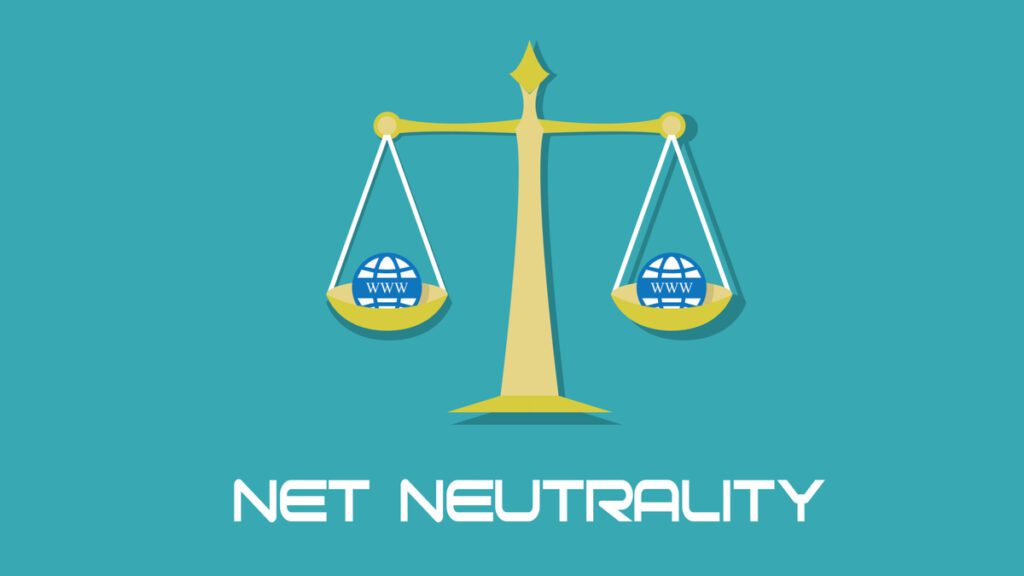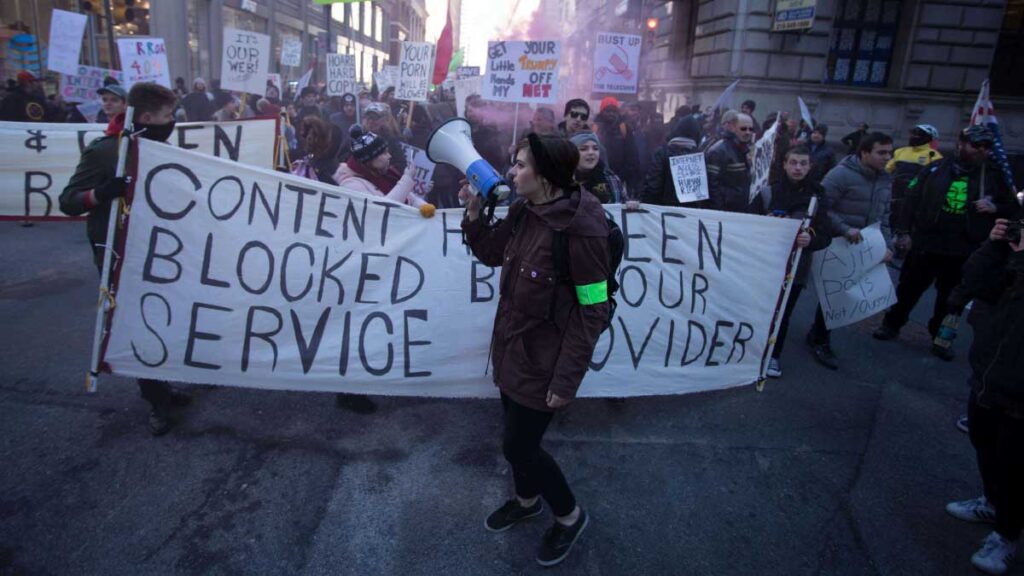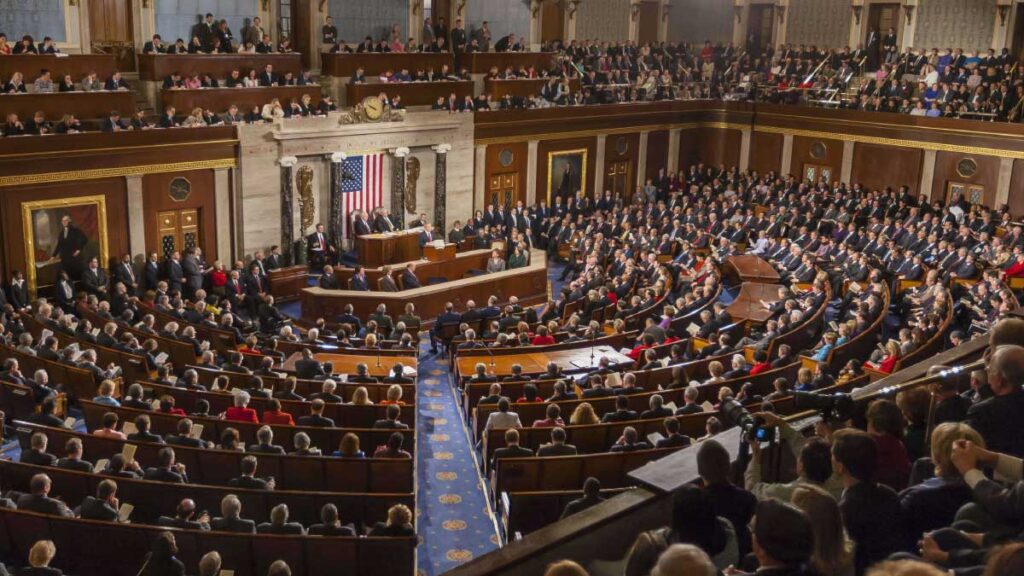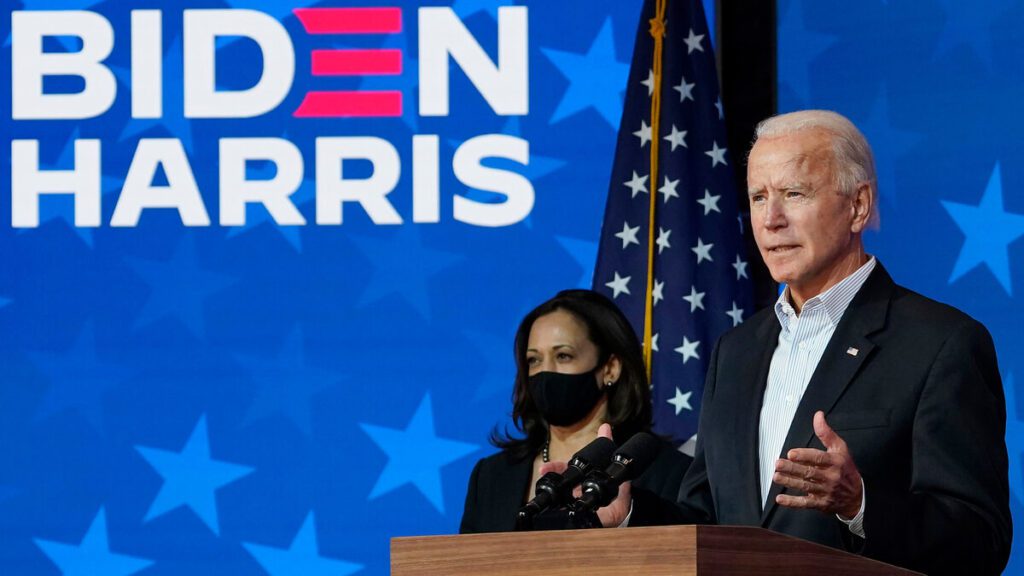
Humankind is slowly transcending into a new reality ushered in by the tidal wave of technological advancements that are developing on a day-to-day basis.
The fifth generation of mobile networks, the Internet of Things (IoT), artificial intelligence (AI), virtual reality (VR), augmented reality (AR), etc.…; these techs and their acronyms could easily fill an entire book.
The future of humanity looks bright, but all falls on the shoulders of governments, Big Tech, and Internet Service Providers (ISPs) worldwide.
This new reality is a double-edged sword; if handled delicately and cautiously, it could bring forth a new dawn of technological changes that would benefit humanity as a whole from all areas of life.
If not, however, it could heavily affect the media we choose to interact with, the information we’re being fed, and the perceptions we might have, not only regarding our society, but of each other.
The key words in this conversation are legislation and policy.
While there is a plethora of technologies that require regulation and policing, without a doubt the grandfather of them all is net neutrality.
What is net neutrality?
Net neutrality is the concept of treating all forms of content flowing on the Internet, on the cables, and cell towers of ISPs equally, shying away from placing certain data on a “fast lane” for the highest bidder, while blocking or slowing down other forms of data.
In laymen’s terms, telecoms should not have the freedom to block or slow connections to services such as Netflix, Zoom, Spotify, and the like in favor of their very own or highest bidder services in an attempt to weaken the competition.
Proponents of net neutrality have argued for years to keep the Internet an open playing field for all, since this level of equality fosters and grows innovation.

Take a moment to consider this, if broadband providers had free reign to pick favorites, or auction off these “fast lanes” for video-streaming technology back in the mid-2000s, then we wouldn’t have platforms such as YouTube or Netflix today.
The growing fear is that companies, organizations, and startups who can’t foot the bill for “fast lane” access will dwindle and fall to those with deeper pockets.
A brief history
The United States is considered the main stage for the fight for net neutrality, since other countries and telecoms will attempt to follow suit if the U.S. looks to loosen its net neutrality laws.
The term “net neutrality” was coined by Tim Wu, a law professor at Columbia University, using it in a 2003 paper tackling online discrimination. During that time, broadband providers in the U.S. such as Comcast and AT&T banned users from accessing virtual private networks (VPNs), and from using Wi-Fi routers, respectively.
Wu worried of ISPs hindering or flat-out restricting new technologies which would result in curbing innovation in the long-term and called for anti-discrimination framework to be put into place.
During the Bush era, the Federal Communications Commission (FCC) took a first crack at setting up anti-discrimination rules for the Internet in 2005. The agency prohibited ISPs from blocking legal content or preventing customers from connecting their devices to their Internet connections.

As a result, Comcast sued the FCC, and won on the premise that the agency had overstepped its bounds, with a federal court ruling that it didn’t have a legal case to implement the 2005 policy.
The policy resurfaced in 2010 in the Obama era, when the FCC pushed a more detailed net neutrality order that could win in a legal fight.
Verizon took action this time around, and again defeated the agency noting the same causes, highlighting that the commission didn’t have the authority to impose net neutrality regulations on services that weren’t considered common carriers under Title II of the Communications Act, like traditional telephone services.
This was later changed when then-FCC chairman Tom Wheeler reclassified ISPs as Title II carriers, enjoying fewer obligations than landline operators. Following the reclassification, the agency passed a sweeping net neutrality order in 2015, that won the court battle with telcos under that premise.
Net neutrality took a sharp turn when Donald Trump got elected to office, as he appointed Republican FCC Commissioner Ajit Pai as chairman, who later planned and was successful in reversing the 2015 order.
The new rules set forth by Pai dropped the common-carrier status for broadband providers, as well as any restrictions on blocking or throttling content. In place of those restrictions, the new rules only require ISPs to disclose information regarding their network-management practices.
What came next?
Republicans, including Pai, have argued that people’s access to the Internet has remained unchanged since repealing the Obama-era net neutrality rules. They even said that – due to the repeal – the network infrastructure witnessed massive investments allowing ISPs to be ready to face the data explosion brought forth by the worldwide COVID-19 pandemic that forced people into their homes.
However, net neutrality advocates dispute these claims, while fearing a raise in prices by telcos, as well as smothering competition, while controlling the speed of access to certain content.
Back in October 2019, a federal appeals court upheld most of the FCC’s repeal of the rules but ordered the agency to reconsider its repeal based on how the move might affect public safety, regulations on infrastructure attachments to utility poles, and the FCC’s ability to provide subsidies to low-income individuals for broadband service.
This reconsideration was brought to a vote within the agency itself, as Republicans held their ground with a 3-2 vote victory to keep the rules unchanged.
“It is patently obvious to all but the most devoted members of the net neutrality cult that the case against the (net neutrality repeal) was a sham,” Pai said in his statement following the vote.

The two Democrats on the FCC, commissioners Jessica Rosenworcel and Geoffrey Starks, voted against the FCC’s order to uphold the 2017 repeal of the rules without addressing the court’s concerns. “This agency is not interested in getting it right,” Rosenworcel was quoted as saying. “Instead, it doubles down, rather than recognizing the realities of the world around us.”
“Without net neutrality protections, it’s just a matter of time before big broadband providers start raising prices, slowing down internet speeds, and making it harder for families, small business, and students to access the opportunities to recover and rebuild from this pandemic,” Democratic Senator Ed Markey told reporters.
Effects of a Biden-Harris administration
Edging closer toward President-elect Joe Biden’s Inauguration Day, the framework of the FCC will witness many changes, as chairman Pai and Republican control over the agency will soon depart.
Under a Biden-Harris administration, Democrats will enjoy the 3-2 majority that will see many Trump-era rulings reversed – mainly net neutrality, section 230 of the Communications Decency Act, as well as a handful of others.

What’s apparent is that Biden will look to push hard on bridging the digital divide within the U.S., as well as broadband affordability, and expanding the Lifeline program which aims at delivering access to the Internet for rural parts of the country, while bolstering 5G rollout.
There are still many unknowns as to how the FCC would operate under Biden, but proponents can rest assured, for the time being, that net neutrality will have a strong presence during the President-elect’s tenure in the West Wing.